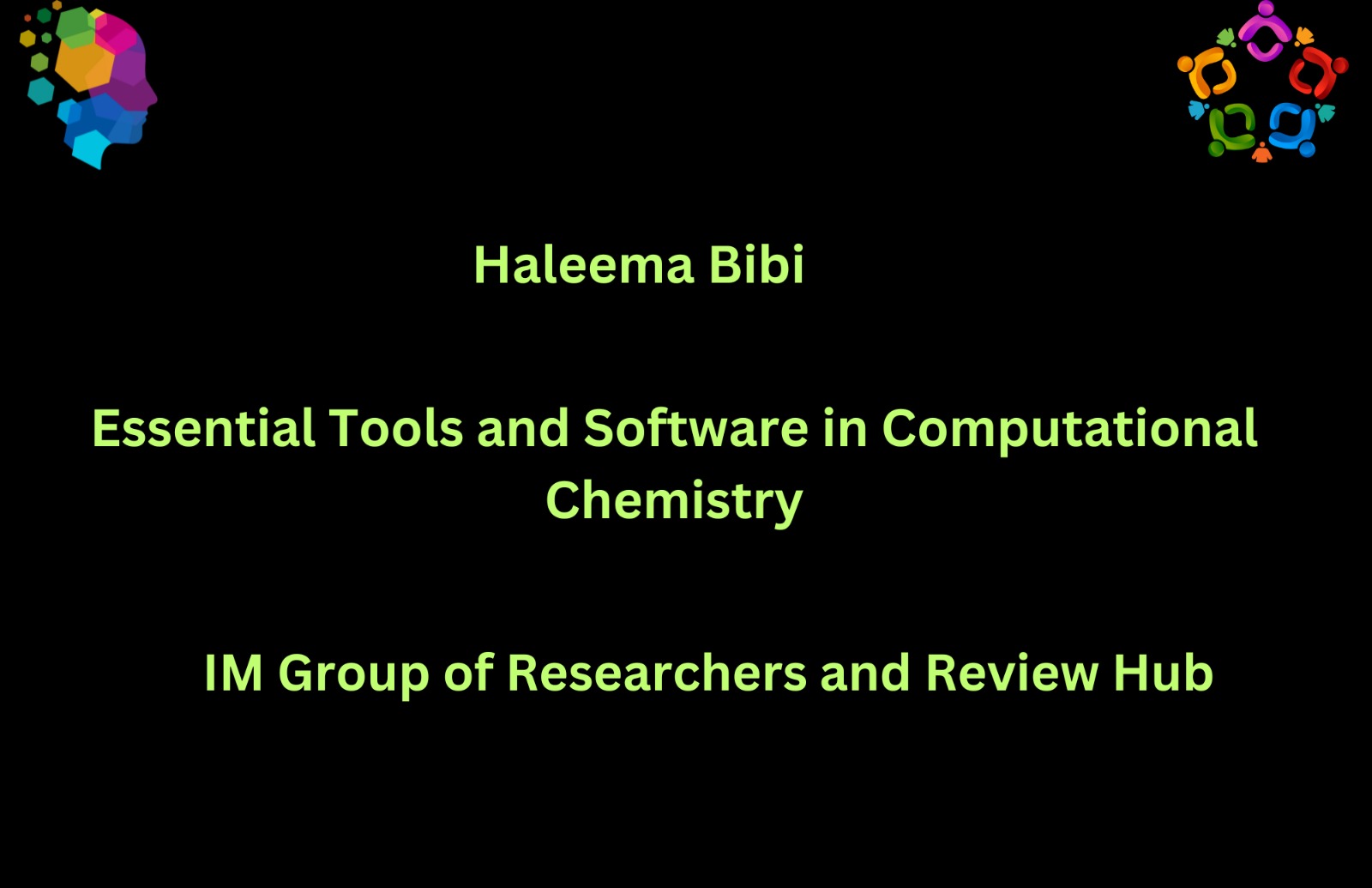Unlocking the Molecular Universe: Essential Tools and Software in Computational Chemistry. The branch of chemistry that uses computer simulation and assist to solve complex chemical problems. It utilizes methods of theoretical chemistry, combined with efficient computer programs, to calculate the structures, interactions, and properties of molecules. Various tools use for different complexes, molecules and their activities.
Author: Haleema Bibi
What is Computational Chemistry?
The use of computers to solve the equations of a theory or model for the properties of chemical systems is known as computational chemistry.
Prerequisites
- Good background in chemistry, physics and mathematics
- Good knowledge of thermodynamics
- Computers
- Programming
- Numerical methods
- Use of scilab
- Gromacs software for classical molecular dynamics
Simulation
Simulation is basically the combination of two branches of science which are theory and experiment. In theory we make prediction which are falsifiable i.e we make claims which may be true false during an experiment. The experiments tests theories and reject if they are incorrect, and allow us to narrow down the aspects that either the theory is correct or incorrect. So computational chemistry is just the use of simulations in the context of chemistry.
Model
The simplified representation of a physical system.
Properties That can be Measured
Energy: FREE ENERGY, EQUILIBRIUM CONTATNT, REACTION RATES,
Structures: EQUILLIBRIUM BINDINGS, PROTIEN STRUCTURES, MACROMOLECULES,
Spectra: IR, NMR, UV VIS
List of Software use in Computational Research
- Avogadro
- Spatran
- Materials Studio
- AutoDock Vina
- Gold
- GROMACS
- Nanoscale Molecular Dynamics
- Gaussian
- Quantum ESPRESSO
- ChemDraw
Tools
The available tools belong to five different classes:
- Molecular Mechanics
- Ab initio calculations
- Semi empirical methods
- Density Functional Theory
- Molecular Dynamics
Molecular Mechanics
Molecular Mechanics is based on a model of a molecule as a collection of balls (atoms) held together by springs (bonds), as stated by hooks law. Balls are actually atoms and springs are bonds, there is basically no concepts of electrons.
By knowing the spring lengths, their angles and how much energy it takes to stretch and bend the springs, we can calculate the energy of a given collection of balls and springs (of a given molecule). One can calculate the energy at ground state as well as transition state.
Geometry is Changes until the lowest energy is found enables us to do a geometry optimization. Molecular Mechanics is fast, a fairly large molecule like a steroid can be optimized in seconds on a good personal computer.
Drawback
It is a fast and cheap but electrons are not considered so it is not so accurate method and not reliable as well.
Ab Initio Calculations
Ab initio is a Latin word means “from the start” which is based on the Schrodinger equation. Schrodinger equation is basically on ethe fundamental equation of modern physics and describe other things, how the electrons in a molecule behave and where electrons are present in a molecule. Ab initio method solve Schrödinger equation and for a molecule and give us an energy and wave function. The wave function is a mathematical function that can be used to calculate the electron distribution. As this method underlying the physical laws necessary for the mathematical theory of large part of physics and the whole of chemistry are thus completely known. The only difficulty bis that the exact application of these laws leads to equations much too complicated to be solvable, but these calculations are still accurate enough to predict the desired physical quantity. There is huge toolbox of theoretical methods available, skills and creativity are needed to solve real world problems.
Semiempirical Calculations
In this tool Schrödinger equation is used for the calculations. Here, more approximations are made in solving it, like one can approximate the properties. The program draws on a kind of library of integrals that was compiled by finding the best fit of some calculated entity like geometry or energy to the experimental values. This plugging of experimental values into a mathematical procedure to get the best calculated is called parameterization.
It is a mixing of theory and experimental that makes method “semiempirical”. It is not a complete computational method. It is based of Schrodinger equation but parametrized with experimental values, we simplify the Schrodinger equation. This method is slower than molecular mechanics but much faster than ab initio methods. Semiempirical takes 100 times as long as molecular mechanics, whereas ab initio take 100-1000 times as long as semiempirical.
Density Funtional Theory Calculations
DFT also based on Schrödinger equation. It does not calculate a conventional wave function, but rather derives the electron distribution (electron density function) directly, wave function of Schrödinger equation is not directly calculated in it but the density of electron. A functional is a mathematical entity related to a function. It converts a number in function and provide energy of a molecule. This tool is faster than ab initio but slower than semiempirical.
Molecular Dynamic Simulations
This method applies the laws of motion to molecules, basically the movement of molecules can be studied in it. We can simulate the motion of an enzyme a sit changes shape on binding to a substrate, or the motion of swarm of water molecules around a molecule of solute. This is biological related field. Quantum mechanical molecular dynamics also allows actual chemical reactions to be simulated.
Also read: Sustainability: Shaping a Greener Tomorrow
Follow Us on

